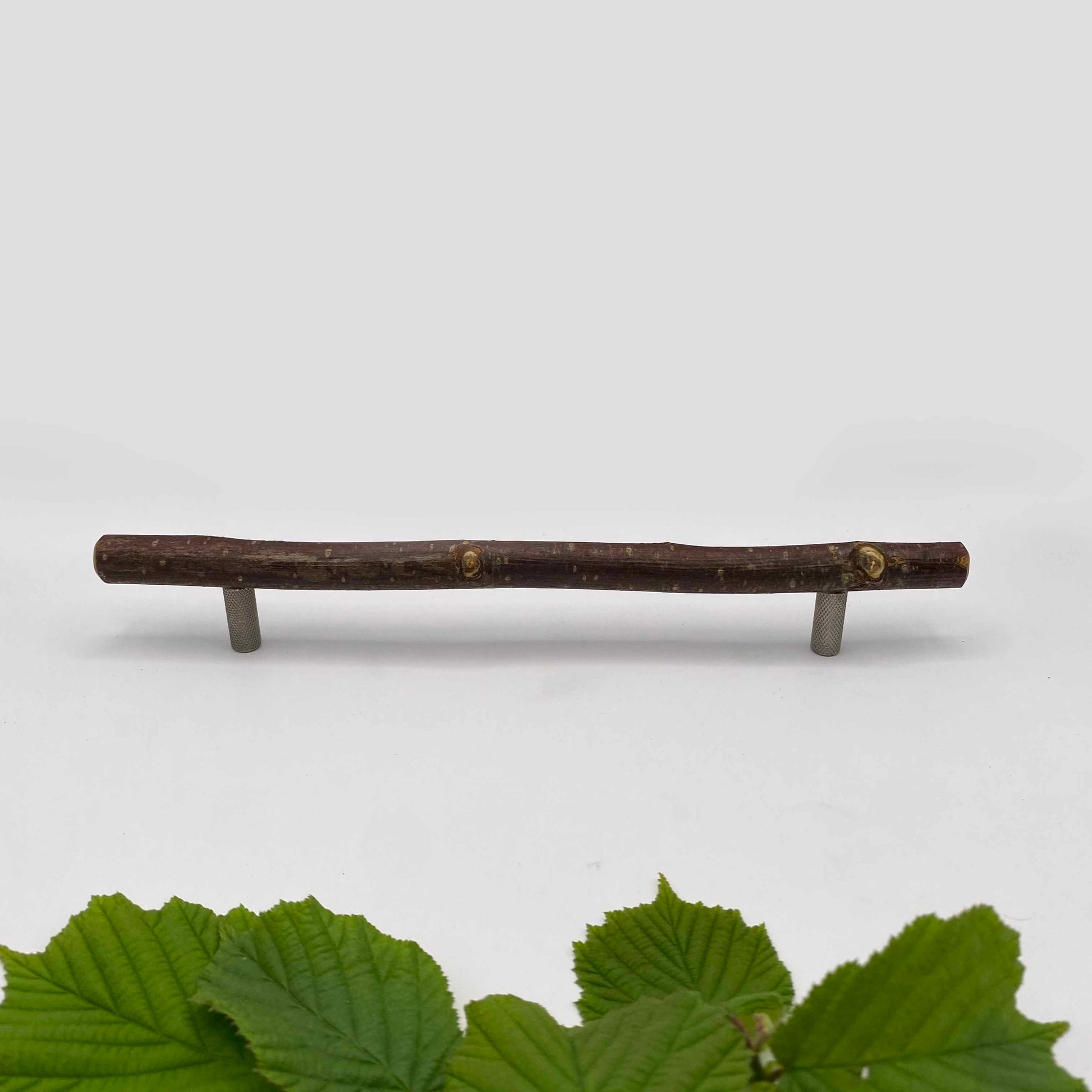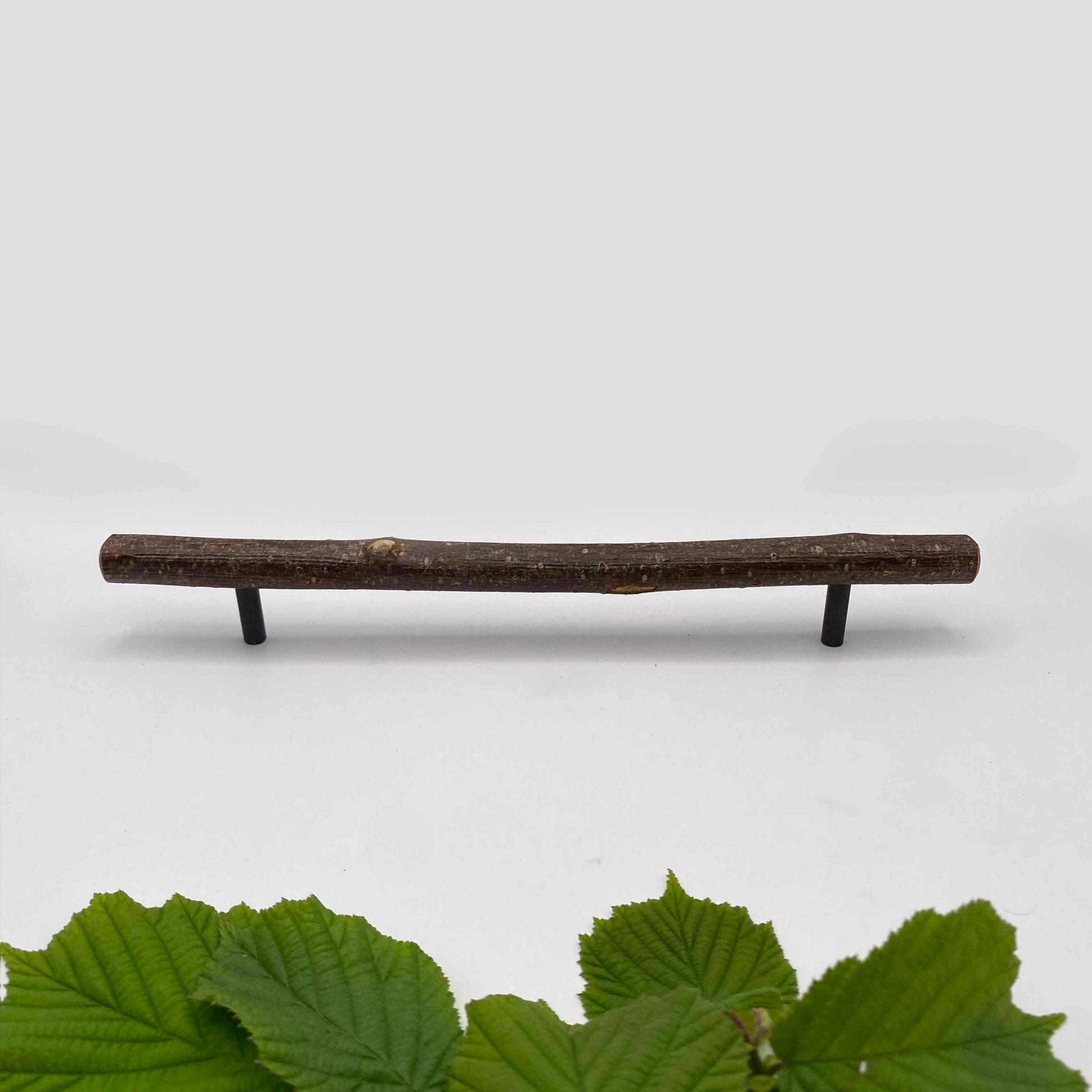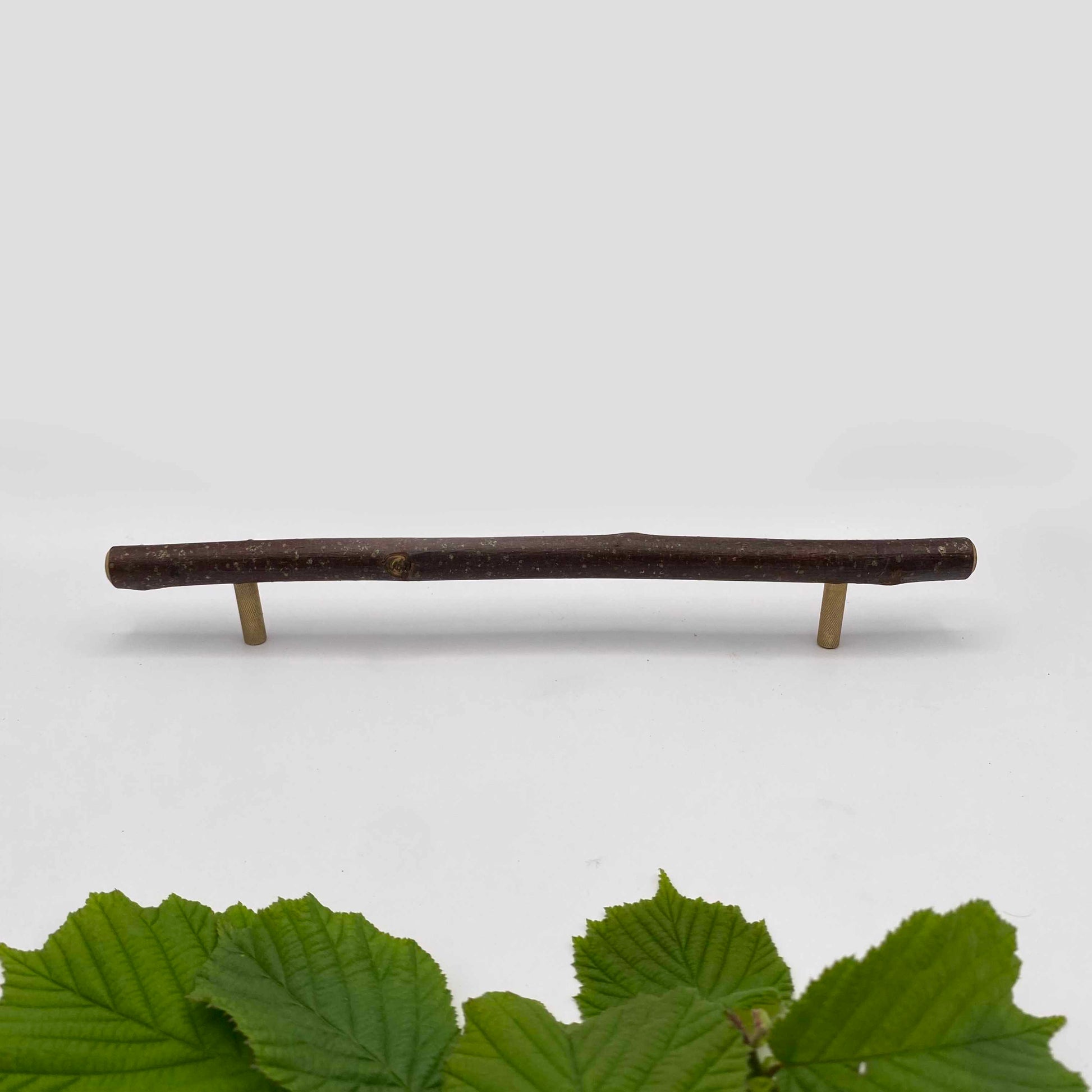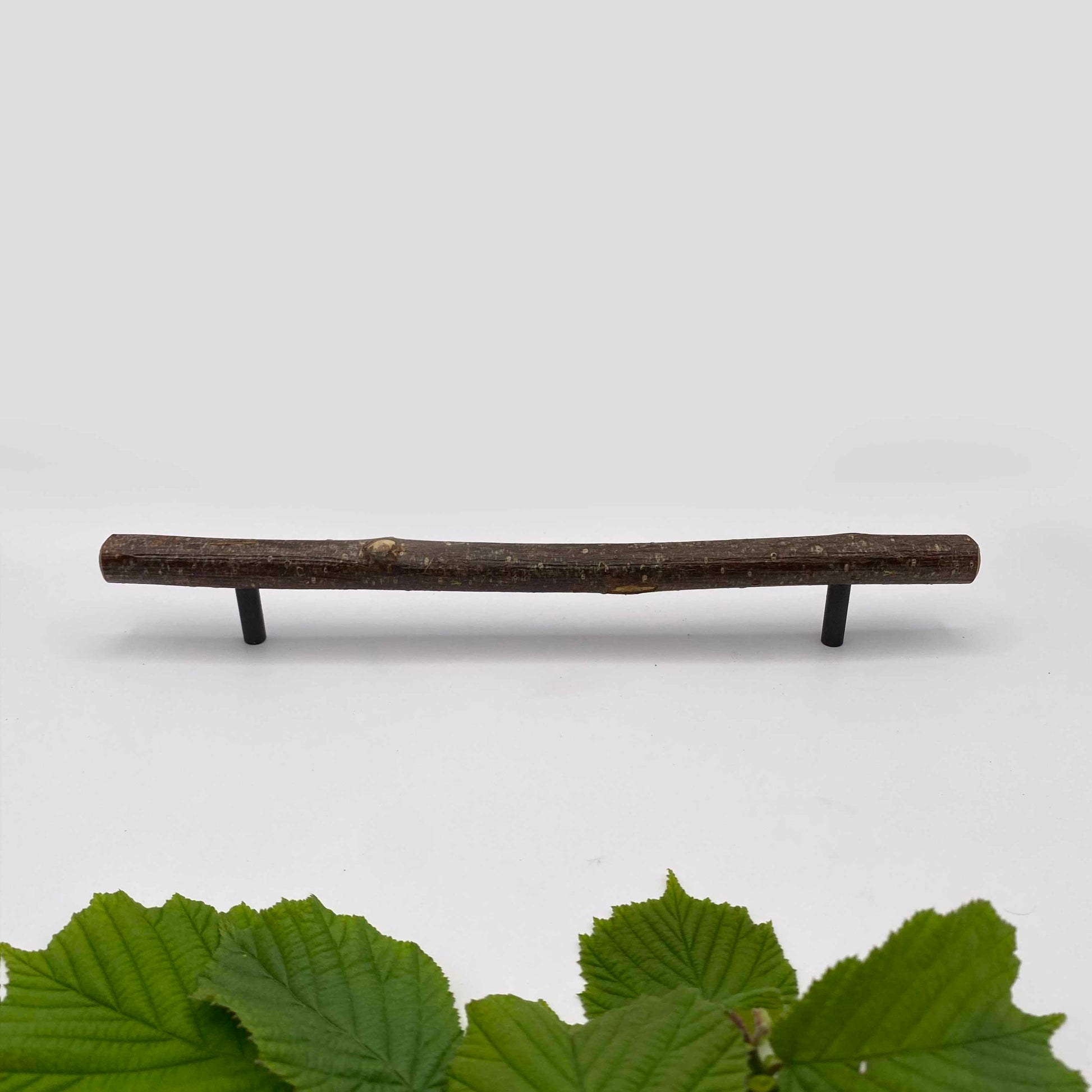Installation Guide
Bar Handles
Before you drill the holes, make sure you have measured very accurately and the holes will be exactly where you want them to be. You're responsible for getting this right.
For 230 Bar Handles: Drill two 4mm holes 160mm apart from one another in the face of your cabinet, where you would like the handle to be.
For 160 Bar Handles: Drill two 4mm holes 97mm apart from one another in the face of your cabinet, where you would like the handle to be.
Insert a bolt in each hole from the back, so the threaded portion pertrudes from the front. You should have 4—9mm of thread pertruding from the cabinet face.
If you've chosen Backing Plates, place them over the bolts at this stage.
Hold your 230 Bar Handle up and align one of the stems with one of the bolts, twist a few times by hand but don't tighten all the way. Align the second stem with the other bolt and twist a few times by hand again.
With a screwdriver or just a butterknife, alternate between the two bolts tightening them up by a few turns each until both are gently tightened with the handle against the cabinet face. Be careful not to over tighten. No power tools needed for this stage, by hand is best.
Knobs
Before you drill the holes, make sure you have measured very accurately and the holes will be exactly where you want them to be. You're responsible for getting this right.
Drill a 4mm hole in the face of your cabinet, where you would like the knob to be.
Insert a bolt in each hole from the back, so the threaded portion pertrudes from the front. You should have 4—9mm of thread pertruding from the cabinet face.
Insert the bolt from the back, you should have 10-15mm of thread protruding from your cabinet face.
If you've chosen Backing Plates, place them over the bolts at this stage.
Thread the brass stem onto the bolt until it’s hand tight, don’t use pliers or another tool to grip the brass.
Then thread the knob onto the remaining exposed bolt, until hand tight.
Finally, gently tighten the bolt from the back with a screwdriver or butterknife until it's firmly tightened with the handle against the cabinet face. Be careful not to over tighten. No power tools needed for this stage, by hand is best.
Aftercare
Wash with warm water using a soft sponge or cloth, avoid scouring pads.
For best results we recommend re-oiling the handle after the first 3 months. You can use: Osmo Top Oil, Tung oil, Teak Oil, Danish Oil.
After this initial stage we recommend oiling the handles once a year to protect the wood.
If you have chosen uncoated brass it will patina over time, this is to be expected. If you wish to brighten the brass with Brasso please cover and protect the wood during application.
Troubleshooting
| Symptom | Problem | Solution |
| Bolt is tight but handle isn't flush against cabinet face. | Bolt is to long. |
Let us know how thick your cabinet face is via the Contact Page and we'll send out replacements immediately. Alternatively you could add a washer or two (if you have them) to the back of the cabinet face under the flanged bolt head. |
| Can't tighten bolts. | Bolt is to short. | Let us know how thick your cabinet face is via the Contact Page and we'll send out replacements immediately. |
| Bolts don't align to stems. | Holes were drilled inacurately. | You can drill slightly larger holes, if you do so you will need Backing Plates to make sure the stems have a firm surface to fit against. |
| During uninstallation, stems undo from hazel handle. | Bolts were tightened too firmly. | By hand twist the stem back into the hazel handle until it's flush. Then re-attach the handle to the bolts but not as tight as last time they were installed. |
































